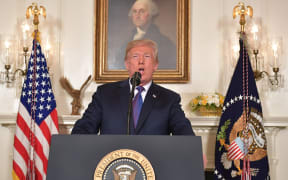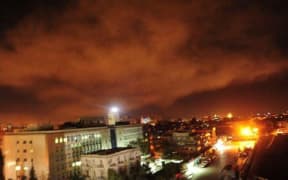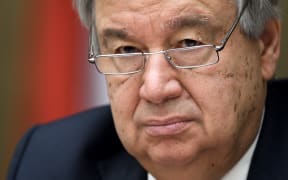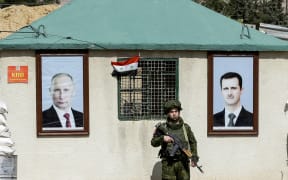Today's joint strike by the United States, Britain and France on Syria came after reports first surfaced last weekend that more 40 people were killed on 7 April in a suspected chemical attack on Douma, which was the last rebel-held town in the Eastern Ghouta region.
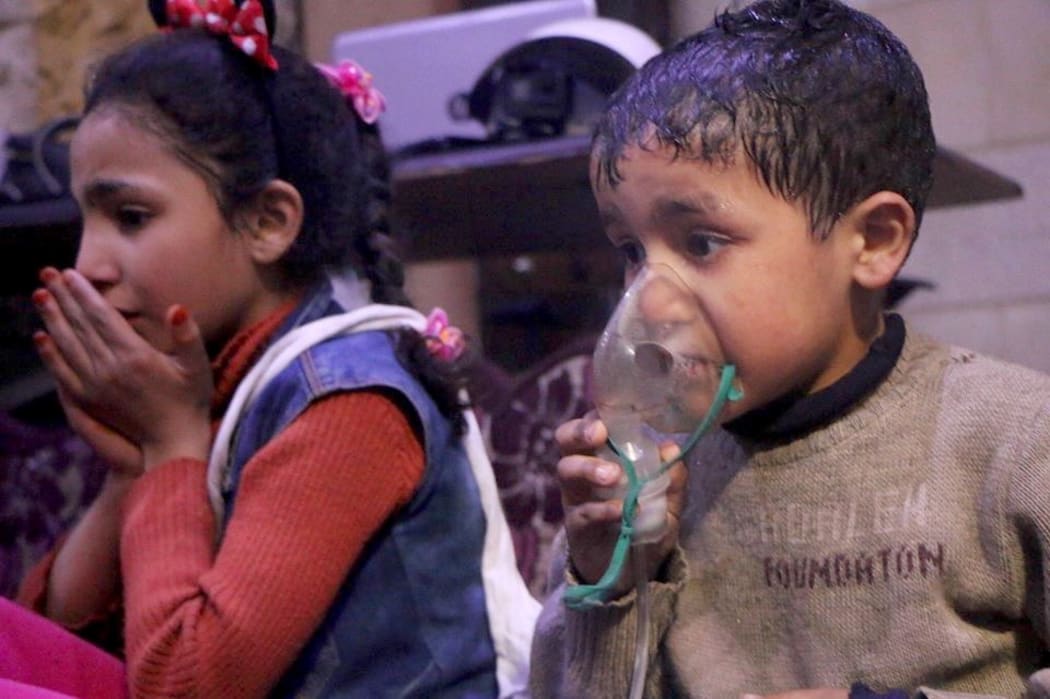
Photo: SYRIAN CIVIL DEFENSE (WHITE HELMETS) / HANDOUT / AFP
France and the US have both said they have "proof" that "chemical weapons were used - at least chlorine - and that they were used by "Bashar al-Assad's regime".
The Syrian government denied the allegation, and its key ally Russia said it had "irrefutable evidence" that the incident was "staged" with the help of Britain.
Why was Douma being bombed?
In February, forces loyal to President Bashar al-Assad launched an assault on the Eastern Ghouta that has reportedly left more than 1700 civilians dead.
In March, troops split the region into three pockets - the largest of which was around Douma, home to between 80,000 and 150,000 people. Facing defeat, rebel groups in the other two pockets agreed to be evacuated to northern Syria.
But the group controlling Douma, Jaysh al-Islam, continued to hold out. On 6 April, after negotiations with the government stalled, air strikes resumed.
What happened on 7 April?
The bombardment continued for a second day, with dozens of people reportedly killed or injured by conventional munitions before the suspected chemical attack. Activists from the Violations Documentation Center (VDC), which records alleged violations of international law in Syria, reported two separate incidents of bombs believed to contain toxic substances being dropped by the Syrian Air Force.
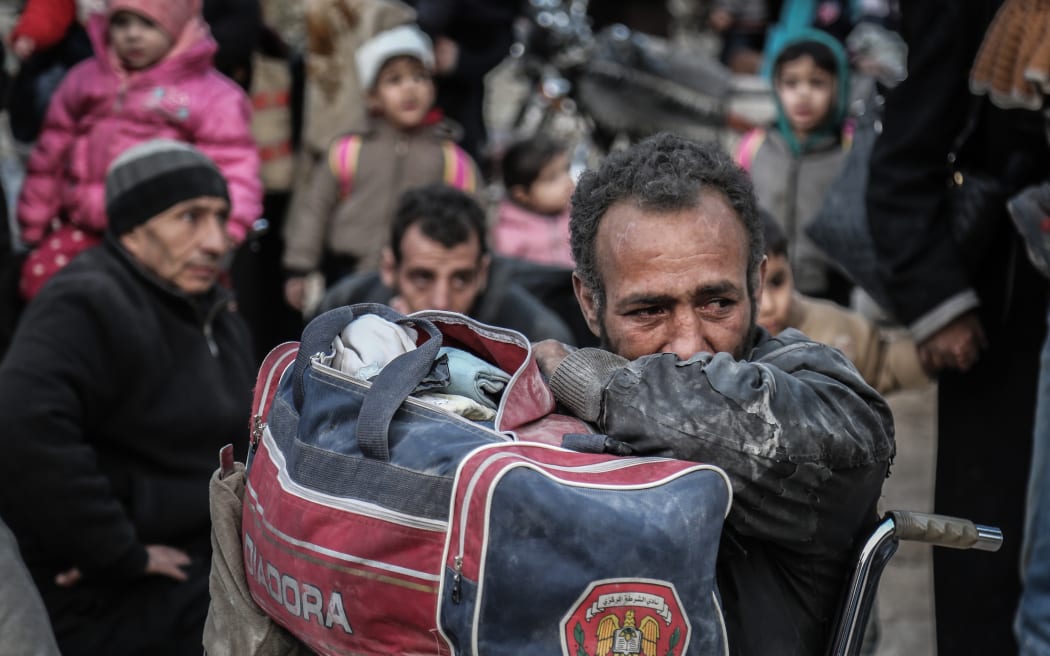
Civilians wait to be evacuated from Syria's eastern Al-Ghouta province outside Damascus. Photo: AFP
It cited a rescue worker from the Syria Civil Defence as saying he smelt chlorine in the air after the strike, but that he could not determine its source.
"We later discovered the bodies of people who had suffocated from toxic gases. They were in closed spaces, sheltering from the barrel bombs, which may have caused their quick death as no-one heard their screams," he added.
The VDC said the second incident took place not far to the east, near Martyrs' Square, at approximately 7:30pm. At 7:45pm, more than 500 patients - most of them women and children - were brought to medical facilities with symptoms indicative of exposure to a chemical agent, according to the Syria Civil Defence and the Syrian American Medical Society (SAMS), a relief organisation that supports hospitals in rebel-held areas.
The patients showed signs of "respiratory distress, central cyanosis (blue skin or lips), excessive oral foaming, corneal burns, and the emission of chlorine-like odour", a joint statement issued on Sunday said. One woman who died had convulsions and pinpoint pupils.
Rescue workers searching homes in the affected area also found the bodies of people with oral foaming, cyanosis, and corneal burns, the statement added. The Union of Medical Care and Relief Organizations (UOSSM), which supports hospitals in rebel-held Syria, also said it received reports of two incidents.
Two videos circulated by the opposition activist group Douma Revolution showed what it said were the bodies of children, women and men found in one building, which is believed to be located south-west of Martyrs' Square. Some had foam coming out of their mouths and noses.
How many people died?
The World Health Organization said it had received reports from its local "health cluster partners" of 43 deaths related to symptoms consistent with exposure to highly toxic chemicals".
The Syria Civil Defence and SAMS said rescue workers found 42 people dead in their homes. One person was declared dead on arrival at a hospital, and another six died while receiving treatment, they added. An earlier, now deleted tweet by the Syria Civil Defence put the number dead at more than 150.
The UOSSM initially reported that 70 people were confirmed dead. On Monday, it revised down the figure to at least 42, but said it was expected to rise.
The Syrian Observatory for Human Rights, a UK-based monitoring group, said air strikes on 6 and 7 April killed almost 100 people. It said they included 21 who died as a result of suffocation, but that it was unable to identify the cause.
The British investigative journalism website, Bellingcat, said it had counted at least 34 bodies in the two videos circulated by Douma Revolution. Bellingcat also assessed that the building near Martyrs' Square where the bodies were filmed was visited by Russian military personnel on 9 April.
What could they have been exposed to?
Experts say it is impossible to know whether a person has been exposed to a chemical agent from looking at a video or photo. The only way to confirm contamination is to take samples and analyse them in a laboratory. However, the UN and other international humanitarian organisations were unable to get into Douma because of the government's siege.
The Organisation for the Prohibition of Chemical Weapons (OPCW) says a fact-finding mission has been "gathering information from all available sources and analysing it".
The Syria Civil Defence and SAMS believe those who died suffocated as a result of exposure to toxic chemicals, most likely an organophosphate - a compound grouping associated with pesticides and nerve agents.
The UOSSM also concluded that the symptoms of the casualties were consistent with exposure to a nerve agent, possibly one mixed with chlorine. Dr Raphal Pitti of UOSSM France said he thought "chlorine was used to conceal the use of Sarin", a nerve agent.
France's President Emmanuel Macron said on 12 April that people had been exposed to chlorine "at least", but he did not mention what other chemical agent he believed might have been involved.
The US said the reported symptoms were "consistent with an asphyxiation agent and of a nerve agent of some type".
Two unnamed US officials also told NBC News on 12 April that tests of blood and urine samples suggested the presence of chlorine and a nerve agent.
What does the Syrian government say?
The Syrian government, which has repeatedly denied ever using chemical weapons, accused rebels of "fabricating" the reports.
Syria's permanent representative to the UN, Bashar al-Jaafari, accused Western powers of falsely accusing the government "to prepare the ground for an aggression against my country, just as the United States and the United Kingdom did in Iraq in 2003".
Russia's Foreign Minister Sergei Lavrov said yesterday that it had "irrefutable evidence that this was yet another attack, staged with the participation of special services of one state that is striving to be at the forefront of the Russophobic campaign".
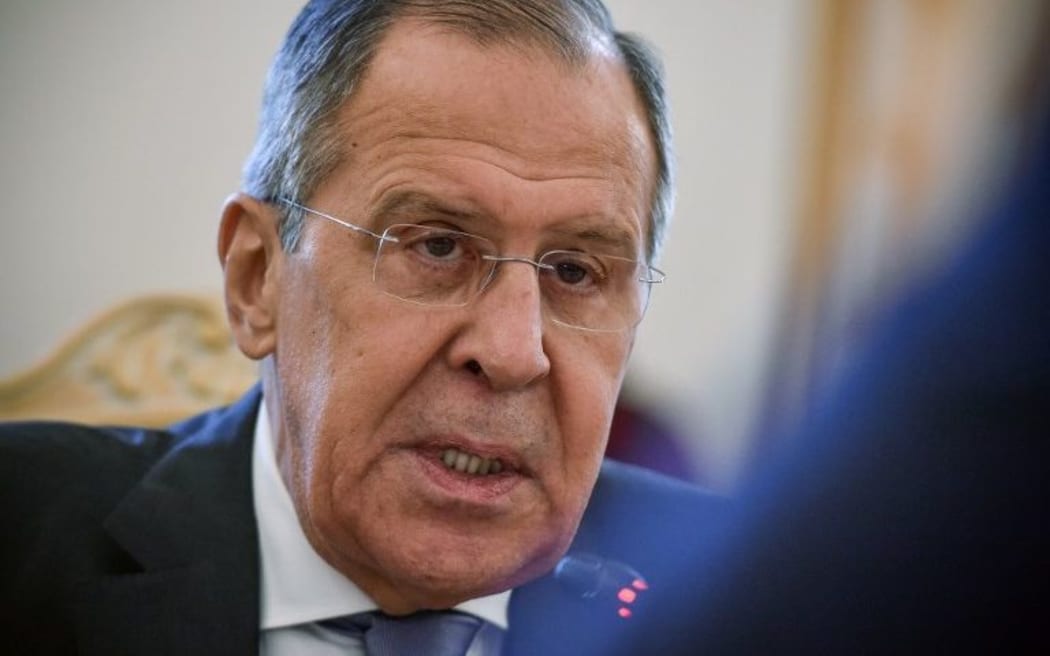
Russian Foreign Minister Sergei Lavrov. Photo: AFP or licensors
Mr Lavrov avoided naming that country, but Russian defence ministry spokesman Maj Gen Igor Konashenkov later said the UK was "directly involved in the provocation".
When were chemical weapons used before?
In August 2013, rockets containing Sarin were fired at several opposition-held suburbs in the Eastern and Western Ghouta, killing hundreds of people. UN experts confirmed that Sarin was used in the attack, but they were not asked to ascribe any blame.
Western powers said only Syrian government forces could have carried out the attack. President Assad denied the allegation, but he did agree to sign the Chemical Weapons Convention and destroy Syria's declared chemical arsenal.
Experts from a joint UN-OPCW mission also said they were confident that government forces used Sarin in an attack in April 2017 on the rebel-held Khan Sheikhoun, which reportedly killed more than 80 people.
President Assad dismissed the attack as a fabrication, but the US carried a cruise missile strike on a Syrian airbase in retaliation.
- BBC
